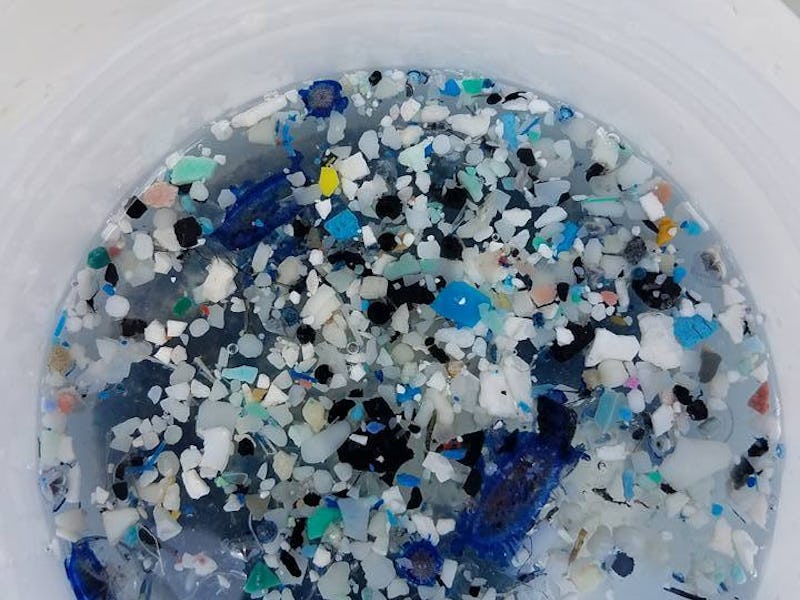Latest Ocean Garbage Patch Is Bigger Than Texas
New photos show an ocean rich with plastic, barren of life.

Captain Charles Moore, discoverer of the Great Pacific Garbage Patch, has released new images from his recent trip to the new frontier of human hubris: a piece of the South Pacific Ocean larger than Texas, thick with plastic debris.
This is the South Pacific Gyre, a vortex of major ocean currents where human trash swirls and accumulates. Moore recently returned from a six-month research trip to define the boundaries of the garbage patch, sample its contents, and study impacts on lanternfish, a small species with an oversized role in ocean food chains.
While no research has yet been published from the excursion, Moore wrote in an update for ResearchGate that the concentration of plastics in the South Pacific Garbage Patch today are similar to those of the larger North Pacific Garbage Patch ten years ago. Things have gotten much worse since then, and that’s where this southern patch will head if trends continue.
Captain Charles Moore shares photos of ocean plastic debris from the South Pacific Garbage Patch.
By one estimate, there will be more plastic than fish in the ocean by 2050 with current rates of plastic accumulation and overfishing. A study published earlier this week found that humans have produced a total of 8.3 billion tons of plastic since its invention, with 80 percent of that now in landfills, on the landscape, or in the oceans.
Garbage patches are not massive islands of floating plastic debris. Most of the trash is broken down into very small pieces, smaller than a grain of rice. It is hard to see and even harder to clean up. Moore describes it like a smog — the best way to deal with smog is at the source, by not releasing the particles in the first place. You couldn’t filter the plastic smog out of the ocean without catching all of the plants and animals, too.
The South Pacific Garbage Patch is similar in scale to the one in the north, although it appears to be different in character. Moore and his colleagues found it to be a desert — mostly void of plankton and the lanternfish they were looking for. That means there’s less sea life exposed to the contamination there, but it also means that any animals that are present might have greater odds of eating plastic by mistake, since it exists in relatively high proportion to plankton and other foods.
As research continues, it becomes less helpful to think of the world’s oceans as having garbage patches being full of garbage in general, with some places of higher concentration than others. “It’s hard not to find plastic in the ocean anymore; that’s quite shocking,” oceanographer Erik van Sebille, from Utrecht University, tells BBC News.